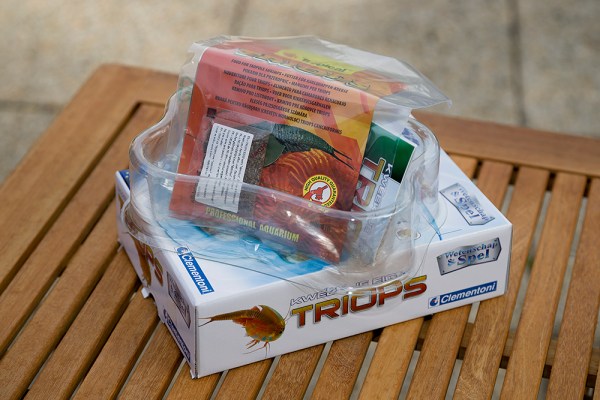Development in micro size; tropical Triops

I’m always looking for new species to photograph for Development. Sometimes I go to a breeder to do the photo shoot on location, but it can also be more convenient to breed a species myself. That way, it’s easier to combine the project with other commercial assignments. A while ago, I found an ad on the internet for eggs of a species I’ve never heard of; tropical Triops. Today, I’m the proud owner of a complete Triops breeding set. I’m hoping that in the next few weeks I’ll be able to start breeding these peculiar animals.
Prehistoric animals
Triops are little crustaceans, who have been able to survive on our planet for millions of years. They only live for a couple of months and have a very fast lifecycle. I found these animals through an ad on the internet and when I did some additional research online, I found that they are pretty easy to breed in a simple set up. They are used a lot for educational purposes; to teach children about nature. There are a lot of places you can find breeding sets, even in our local toy store. Because it could be a good addition to my project, I decided to buy a breeding set and see what happens.
Very small
Triops could be the first crustaceans I’ll shoot for Development. But before the new series will be finished, I expect some issues I’ll have to address first. The first problem is the very fast growth rate of these animals. I know it will be fast, but I’m not sure how fast exactly. If I wait too long, I’ll miss a valuable part of their development, but if I take the pictures too soon, the change between the first and the last picture won’t be big enough. At the moment, my plan is to take a picture every day. If it turns out that they grow more slowly than I thought, I can remove some of the pictures and switch to once every two days, or even every three days. My second challenge will be that the eggs are really small. I’m not sure if the newly hatched Triops will be big enough to shoot. I’m using a macro lens, extension tubes and converters, but there’s a limit to what I can do with them. The last challenge will be to keep the animals alive. We had very high temperatures this summer, so I decided to wait for more suitable circumstances. The instructions say that you’ll have to heat the eggs for a few days with for example a desk light. After they’ve hatched, you should keep them at room temperature. But what do they mean by that? At the moment, the temperature in my living room rises over 25°C and I think that will be to warm for them. Hopefully the summer heat will be over soon and I’ll be able to start breeding them.



Leave a Reply
Want to join the discussion?Feel free to contribute!